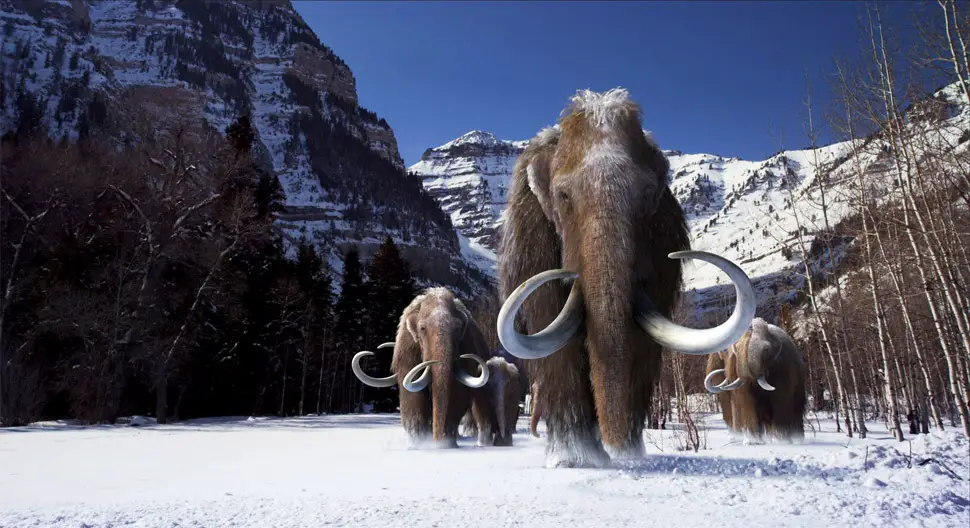
4th July 2015 The first comprehensive analysis of the woolly mammoth genome The first comprehensive analysis of the mammoth genome has been completed – revealing a number of traits that enabled the animals to survive the Arctic cold.
2015 is turning out to be a significant year for research on mammoths. In March, DNA from an ancient specimen was spliced into that of an elephant and shown to be functional for the first time. In April, a team sequenced the entire genome of the extinct animal. Following those breakthroughs, it is now reported that scientists have completed the first detailed analysis of the genome, revealing extensive genetic changes that helped mammoths adapt to life during the Ice Age. The research was published this week in the peer-reviewed journal Cell Reports. It concludes that mammoths possessed genes with striking differences to those found in elephants. These genes played roles in skin and hair development, fat metabolism, insulin signalling and numerous other traits for adaptation in extreme cold environments. Genes linked to physical traits such as skull shape, small ears and short tails were also identified. As a test of their function, a mammoth gene involved in temperature sensation was "resurrected" in the laboratory and its protein product characterised. “This is by far the most comprehensive study to look at the genetic changes that make a woolly mammoth a woolly mammoth,” says Vincent Lynch, PhD, assistant professor of human genetics at the University of Chicago. “They are an excellent model to understand how morphological evolution works, because mammoths are so closely related to living elephants, which have none of the traits they had.” Well-studied due to the abundance of skeletons, frozen carcasses and depictions in prehistoric art, these animals possessed long, coarse fur, a thick layer of subcutaneous fat, small ears and tails and a brown-fat deposit behind the neck which may have functioned similar to a camel hump. They last roamed the frigid tundra steppes of northern Asia, Europe and North America roughly 10,000 years ago.
Previous efforts to sequence preserved mammoth DNA were error-prone, or yielded insights into only a limited number of genes. Lynch and his team performed deep sequencing of two specimens to identify 1.4 million genetic variants unique to woolly mammoths. These are now known to have caused changes to the proteins produced by around 1,600 genes. Of particular interest was a group of genes responsible for temperature sensation, which also play roles in hair growth and fat storage. The team used ancestral reconstruction techniques to “resurrect” the mammoth version of one of these genes, TRPV3. When transplanted into human cells in the lab, the mammoth TRPV3 gene produced a protein that was less responsive to heat than an ancestral elephant version of the gene. This result is supported by experiments with TRPV3 on mice, which prefer colder environments and have wavier hair than normal mice. However, although the functions of these genes match well with the environment in which woolly mammoths were known to live, Lynch warns that it is not direct proof of their effects in live mammoths. Regulation of gene expression, for example, is extremely difficult to study through the genome alone. “We can’t know with absolute certainty the effects of these genes unless someone resurrects a complete woolly mammoth, but we can try to infer by doing experiments in the laboratory,” he says. Lynch and his colleagues are now identifying candidates for other mammoth genes to functionally test, alongside planning experiments to study mammoth proteins in elephant cells. High-quality sequencing and detailed analysis of genomes can serve as a blueprint for efforts to “de-extinct” the woolly mammoth, according to Lynch: “Eventually, we’ll be technically able to do it,” he states. “But the question is: if you’re technically able to do something, should you do it? I personally think no. Mammoths are extinct and the environment in which they lived has changed. There are many animals on the edge of extinction we should be helping instead.”
Comments »
|








